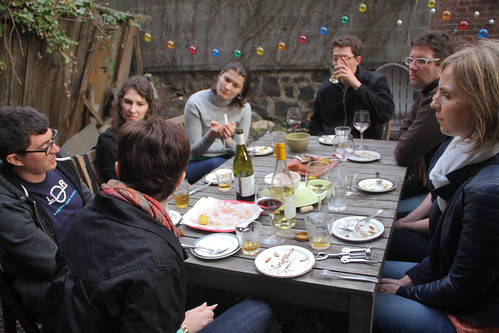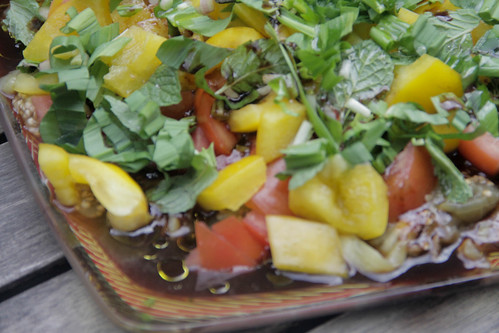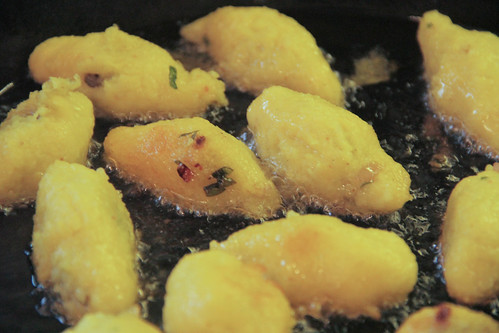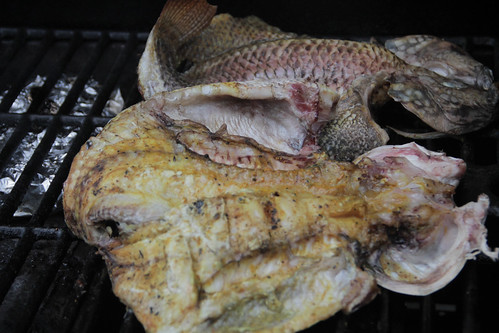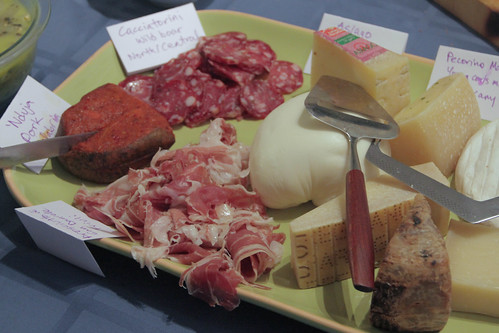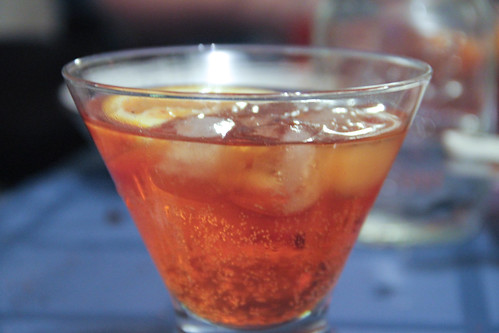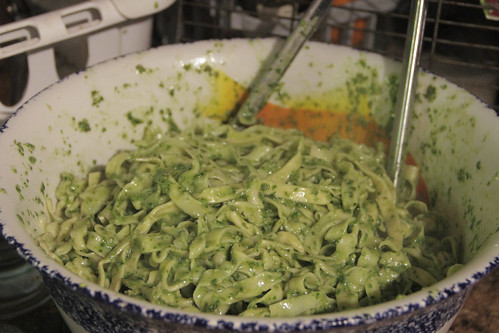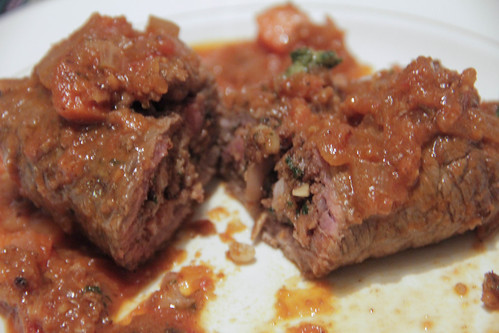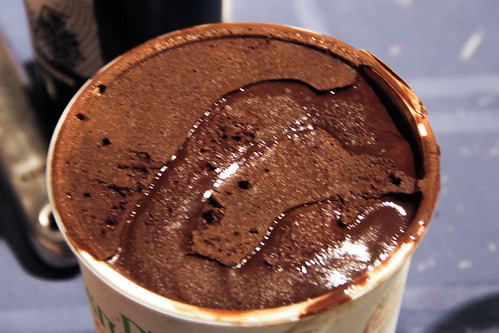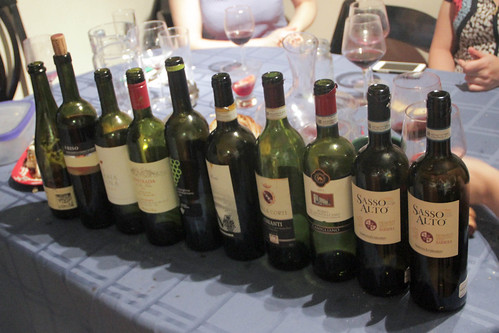I was surprised to read in my research for this meal that a lot of Jamaicans wish they'd never gone independent from the United Kingdom, missing the economic stability and lower crime of that bygone era. It turns out that this tropical island, which on the surface is about as different as possible from that European one, has a fair amount more in common with it than you would think, at least through the lens of food. The patty, for instance, is probably directly derived from the Cornish pasty. The saltfish in the national dish was introduced through English trading ships, as was the quirky and beloved starch-on-a-tree, breadfruit. Even sorrel, that cheery drink, came on slave ships from West Africa. That said, it's held on good authority that jerk meat is a homegrown creation, and in fact allspice, found throughout the cuisine as mostly a spice for savory dishes, is native to the island.

Our guest of honor was Lois, from Jamaica! We also dined with Heather, Sarah, Brian, Chris, Betsy, and Christen. Despite the fact that it looks like I was pasted in the front there, I swear I was actually there, it's the lighting.
Planter's Punch
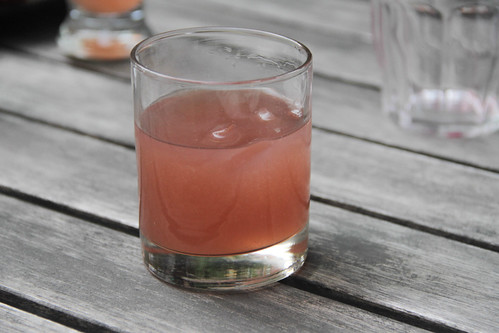
There's plenty of disagreement over whether this drink comes from South Carolina or Jamaica, but either way, this drink is a sweet, tropical refresher. Tropical juices and grenadine (which I made from scratch by boiling down pomegranate juice and adding sugar) hook up with dark rum and a dash of bitters, and voilà. There are as many recipes as bartenders!
Sorrel
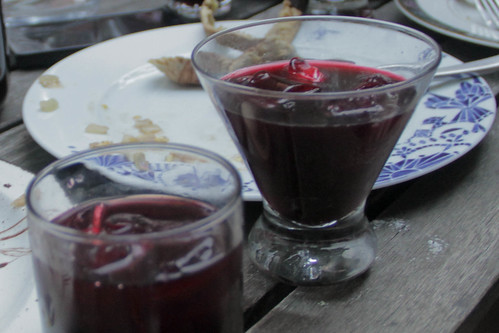
The word in Spanish for the flower, and the rich red drink it makes, is jamaica. So I’m not at all surprised that the island with the same name loves to drink what we call hibiscus and they call sorrel. It’s got all the color and staining power of beets, with a fruity sourness reminiscent of pomegranate without the sweetness. Accordingly, when making a drink from the dried sepals, you sweeten it after a boil and long soak, and sometimes even add other flavors like ginger and clove. I made this one fairly tart, and Lois said she liked it that way, so hooray. Just be sure to not spill any on yourself or the stain will likely not come out! Goes very well with rum, by the way.
Saltfish and ackees | Recipe
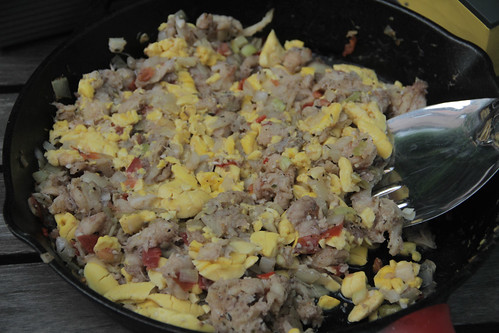
While jerk is by far the best-known Jamaican food up here, the undisputed national dish is a breakfast food that looks like scrambled eggs but is made from an oily fruit and a salty dried fish. It’s curious that, even though they’re surrounded by abundant seas, the national dish is made from long-preserved fish from Canada, but colonial legacies will do strange things. At least the fruit is quite native: ackees look a bit like oversized lychees, but aren’t very sweet. So long as you remember to soak the fish overnight, the dish is a cinch to whip together, and tastes quite a bit better than it looks or sounds. I’d definitely eat this salty, moderately greasy, and tasty plate as a hangover cure.
Patties | Recipe
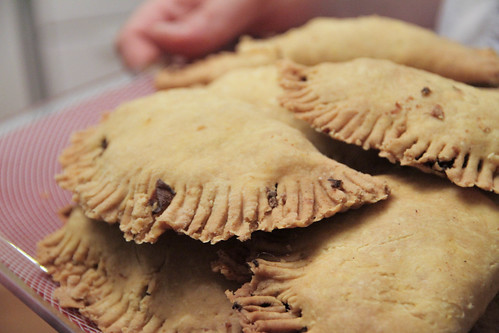
A Jamaican patty is flaky, tinged yellow with curry, and traditionally stuffed with an allspice-heavy, moderately spicy ground-beef filling. I did that, as well as a vegetarian version with chorizo. As I continue to struggle with pastry, I gave up rolling out big sheets of the patty dough, and instead rolled out individual rounds, which was tedious but worked ok. The patties baked up nicely and were really quite yummy.
Jerk chicken | Recipe
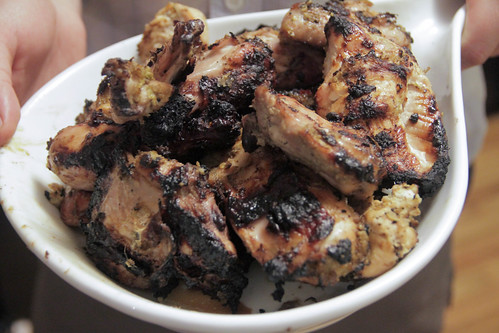
Once you’ve whipped up the off-white marinade, heavy with onions and the classic thyme and allspice, you’ll wonder how it’ll turn into that super-dark coating that you think of when you think of jerked meat. Well, it takes patience: first for the long marinade, and then the slow grill, but darken it will. It turned out so damn well: I’m sure part of it is due to having used tender local well-raised chicken, but that long marinade just took it to beautiful, spicy, flavorful places.
Breadfruit
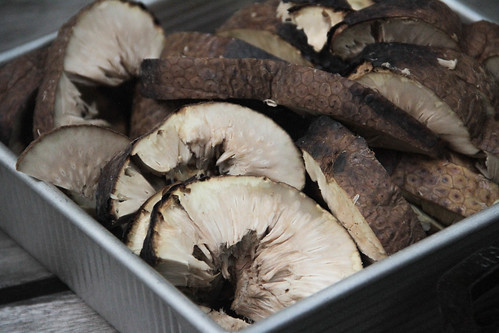
Ever heard of the Mutiny on the Bounty? The ship was on a mission from the Caribbean to the South Pacific to bring back samples of the tree that grows this big, fleshy, surprisingly bread-like fruit that was rumored to be super nutritious, as cheap food for slaves. It turns out the scaly fruit is kind of a health dud, and the slaves originally refused to eat it, but it eventually became a beloved part of the cuisine of the islands. It’s easy enough to cook: just roast it whole over fire (like I did) or in an oven (if that's more convenient), and cut it open. So what’s it like? Well, it looks like one of those smooth-skinned avocados blown up to several times its size, and tastes something between a banana and an artichoke. They’re kinda hard to come by — this was the fourth Nosh for which I looked in West Indian markets for breadfruit and the first time I got them — so if you happen to see it, do yourself a favor and give it a try. I doubt you’ll develop a craving, but you probably won’t hate it either.
Ice creams: Grape-nuts | Mango
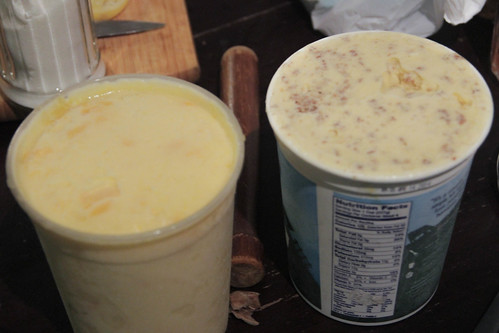
Turns out Jamaica has a pretty big ice-cream culture, so for my final act before selling my machine, I whipped up a few frozen treats.
I was surprised as you probably are to learn that Grape-nuts ice cream is one of the most beloved flavors in Jamaica. (Weirdly, it also is in Maine.) I can see why: there’s something about how the malt plays off the sweet and cream, and the crunch in contrast with the soft, that’s just really delightful. The mango ice cream, with a squeeze of lime, was pretty alright too, though I think the chunks of fruit were too big and got kinda icy.


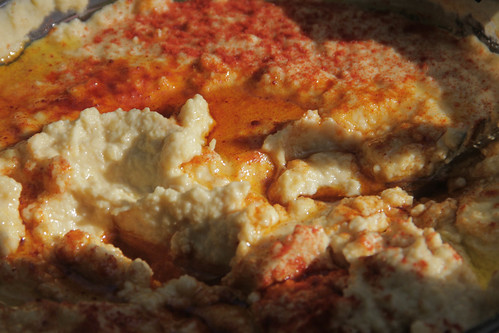
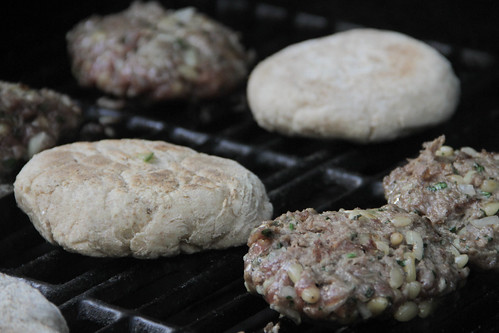
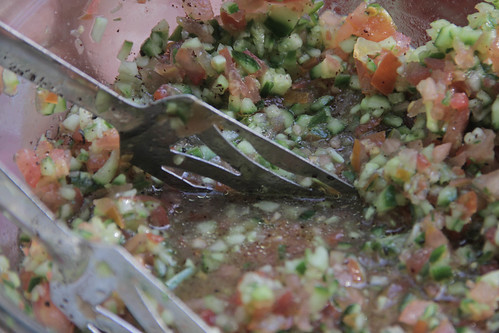
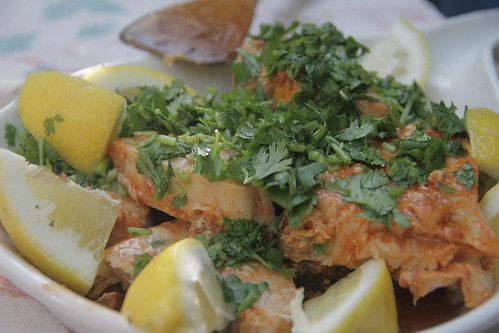
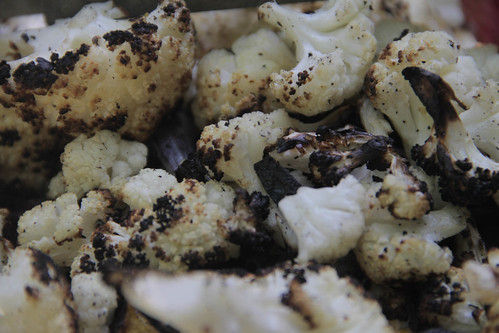
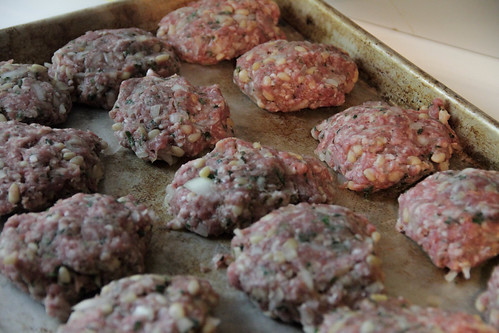
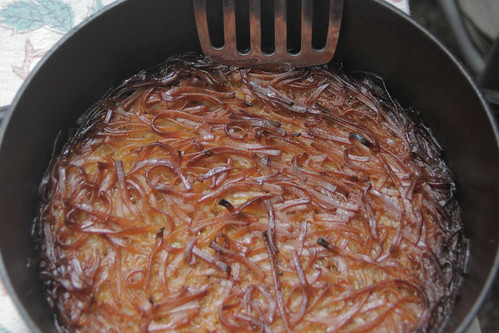

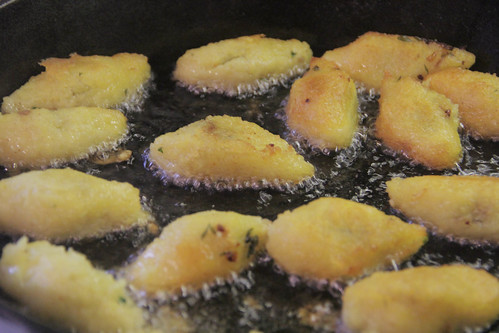 Look beyond the horrible news coming out of the country these days, or the past few decades — way, way beyond, because agriculture and civilization in the lands that now comprise Iraq goes back at least ten thousand years. The soils along the Tigris and Euphrates river are fertile and relatively moist, and the surrounding lands held forth wild grasses that became such staple grains as wheat and barley, and soon after domesticated animals, and writing, and even beer.
Look beyond the horrible news coming out of the country these days, or the past few decades — way, way beyond, because agriculture and civilization in the lands that now comprise Iraq goes back at least ten thousand years. The soils along the Tigris and Euphrates river are fertile and relatively moist, and the surrounding lands held forth wild grasses that became such staple grains as wheat and barley, and soon after domesticated animals, and writing, and even beer.